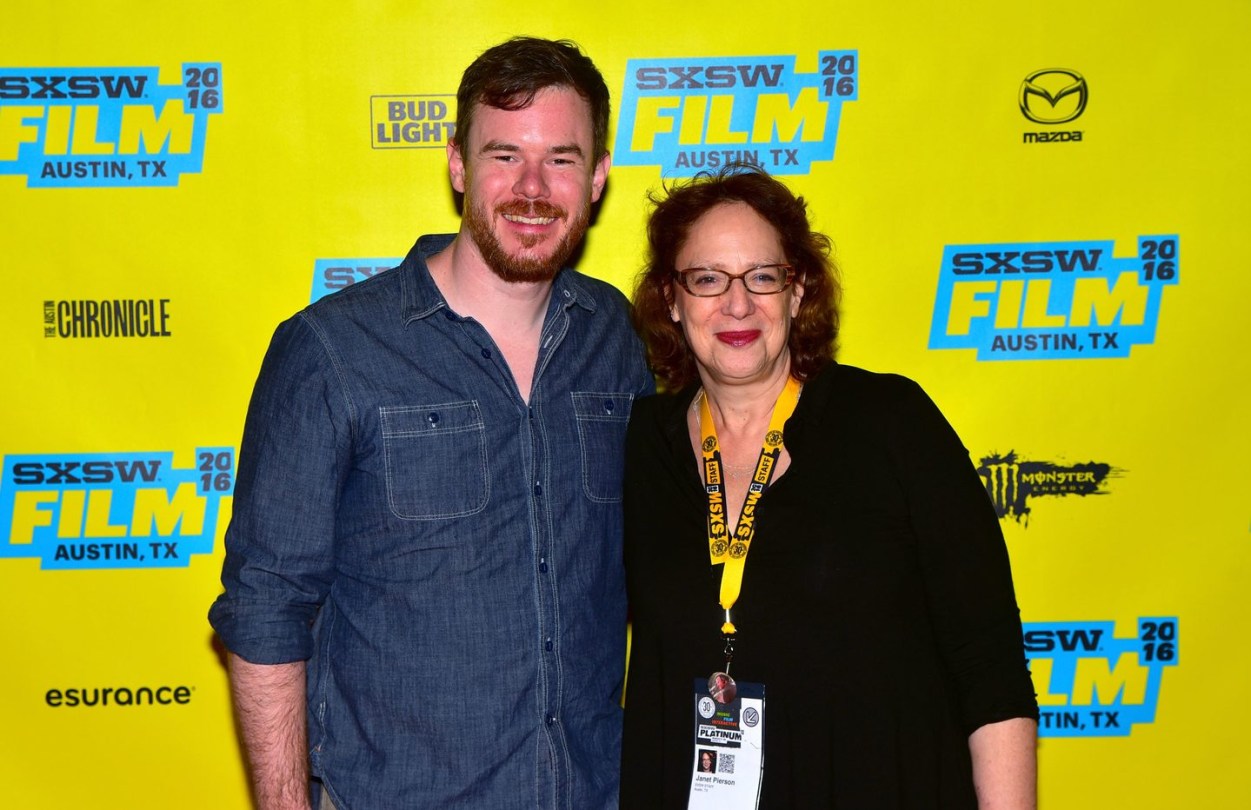How would you describe SXSW Film in those early years?
SXSW Film in the early days was an easy four-day getaway as well as a great escape from the harsh New York March winter. We had various work involvements: promoting John’s recently published Spike, Mike, Slackers & Dykes along with Kevin Smith in 1996; filming an all-Austin episode of our IFC series, Split Screen, in 1998; presenting a work-in-progress screening of How’s Your News?, a doc John executive produced along with South Park’s Matt Stone and Trey Parker.
SXSW Film was cheap and chill, a great way to catch up with industry friends. In those early days, the conference was the main event, along with secret screenings of Linklater’s new work or exciting films from Sundance. I’ll never forget seeing Linklater, Robert Rodriguez, Stephen Soderbergh, Quentin Tarantino, Mike Judge, George Huang and Kevin Smith, all seated together in one panel session.
I remember sneaking off to the relatively far away, empty side of the Convention Center to catch Stewart Brand give a talk for SXSW Interactive about the Clock of the Long Now. And I recall hanging with Eugene Hernandez at any one of the tech talks, intrigued by the idea of “what’s next?”
When did you move to Austin?
At SXSW 2004, John said, “I’ve called a realtor ... let’s check out houses.” His list of reasons to move included: better public high schools, lacrosse for our son, a film and music scene, a walking culture, warmer climate, and cheaper cost of living. I thought that sounded like an impossible fantasy. It turns out it was all here in Austin.
That year, we also spent time at SXSW with a recent University of Texas graduate named Matt Dentler, who had taken over the reigns of SXSW Film from Nancy Schafer, who had had the original task of realizing SXSW Film in the shadow of SXSW Music. She was the architect, but by 2004, she had moved on. Dentler, her former intern, stepped up and got our attention. What Matt was “doing” with SXSW Film was part of the list of why we were thinking of moving to Austin.
In August 2004, we made the move to Austin. We’d sold the DVD rights to Split Screen, and John was going to teach at UT. At Louis Black’s recommendation, I was invited to join the board of the Austin Film Society. I made it a point to meet everyone in the Austin Film community and make myself helpful.
SXSW 2005 was our first experience in town as locals, and we were also involved with a film screening at SXSW after its Sundance premiere. It was the doc Reel Paradise directed by Steve James, about our year (2002–2003) in Fiji, showing free movies at the 180 Meridien Cinema on the garden island of Tavueni.
SXSW 2005 was an unforgettable year for so many reasons, both personal and for the event overall. Not the least of which for me was meeting a contingent of young, very enthusiastic filmmakers out of Chicago (introduced to us by Lizzy Donius, a former Split Screen contributor who was now running IFP/Chicago).
"In those early days, the conference was the main event, along with secret screenings of Linklater’s new work or exciting films from Sundance."
How did you become Director of SXSW Film?
One day in March 2008, right after SXSW, Matt Dentler stopped over to let me know he was leaving SXSW.
Matt had been a gamechanger for SXSW. He talked Universal into presenting Judd Apatow’s Knocked Up as a WIP months before its release. He programmed a number of new, microbudget filmmakers (including Joe and Kris Swanberg, David Lowery, Sean Baker, Ry Russo, Aaron Katz, Safdie Brothers and Barry Jenkins, just to name a few), who formed a rich community for feedback and collaboration. He was able to get national, and even international, press and buyer attention for SXSW Film. In those years (2004–2008), it felt like something new was happening, and 10 years later, we are indeed enjoying superb work by so many of the filmmakers he was the first to support.
Forty-eight hours later, I received a call inviting me to become Matt’s successor. I was 50 years old, and hadn’t worked with anyone other than my husband since I was 29. John’s response to the idea was some kind of outburst with three points, the only one I remember being, “Of course you have to say ‘Yes.’ ”
So here it is, heading into my 10th festival, the 25th edition of SXSW Film. It has been exhilarating and exhausting, and most of all, a true privilege to have provided so many transformative moments for so many really talented filmmakers. At SXSW 2018, along with my small but immensely talented team of collaborators, we can’t wait to present programming that is rewarding for the creators and our amazing audiences.
For stories and reflections from notable SXSW Film alumni, visit SXSW Film 25.



